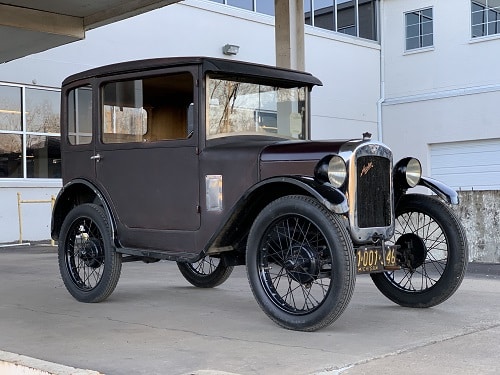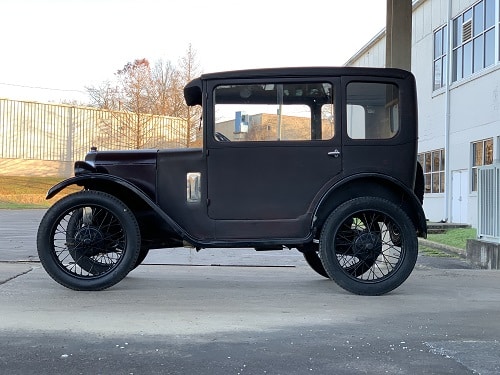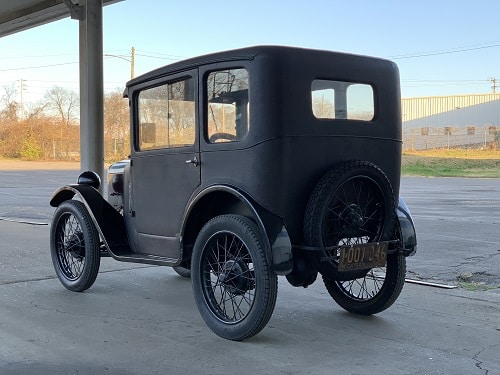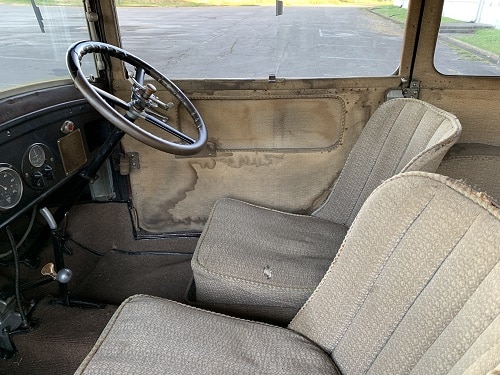
Austin 7 “Fabric Saloon”- 1929

After Sir Herbert Austin established his reputation at the Wolseley Tool and Motor Co., he found backing for a venture based in Longbridge, England and successfully produced his own cars. Before the war, Austins were much larger cars of high quality. During the war, they manufactured everything from airplanes to artillery shells. A minor setback after the war temporarily put Austin in receivership, but the firm fought back with several new models. One of them was Sir Herbert Austin’s diminutive masterpiece, the Austin Seven.
Nicknamed “Baby Austin,” the car was affordable and reliable, meeting the needs of young modern families. The Austin Seven was also very stylish and became one of the most popular cars produced for the British Market, similar to that of the Model T Ford in the U.S. The Austin Seven affected the entire automotive world as they licensed to other companies. In Germany, the very first BMW car, named Dixi, was a licensed Austin Seven. Car manufacturer Lucien Rosengard produced Rosegarts in France under licensing. In Japan, Nissan based the Datsun Type 11 on the Austin Seven design, although not under license, which lead to a 1952 agreement to build them under the Austin name. The American Austin Car Company in Butler, Pennsylvania, built American Austin Bantams with licensing.
British pilot and racing driver E.C. Gordon England built the first Austin Seven fabric-bodied saloons with his coachbuilding company. England based the construction on his aircraft building principles. He produced Austin Seven Fabric Saloons from about 1926 to 1930. The construction of the body consists of a wood, inner framework. He covered the wood structure in “Rexine,” a specially made cloth coated with a mixture of cellulose paint and castor oil which was formerly used in the manufacturing of WWI aircraft wings. Fabric covers the entire wooden-framed body and nailed into position from the cowl rearward, including the opening doors. Because of this construction, very few original examples exist today. Until the fabric bodies fell from fashion in the early 1930s, the “Fabric Saloon,” often called the Doctor’s Saloon, remained in Austin’s catalogue at 14% premium (£ 20) over Austin’s standard steel-bodied saloon. The original Fabric Saloon selling price was about $680.00 US, which was the price of the more expensive Model A Ford body styles offered during 1929.



